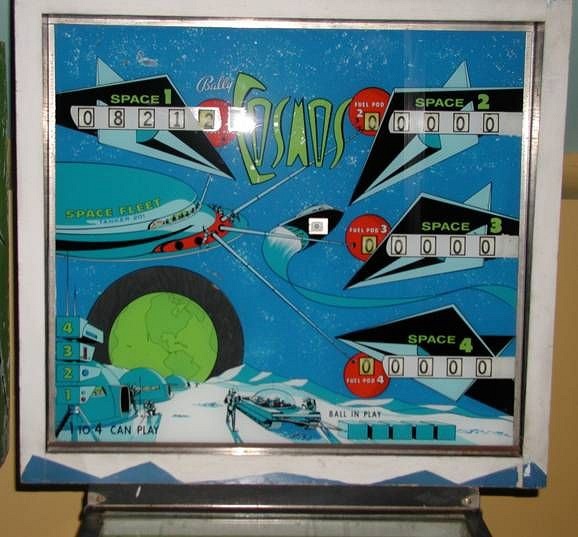


A special version was produced for Germany with the same project number and project release date. The schematic part number for the US version was W-1042-56a. The German version was W-1042-57a. The geometric cabinet design was used again on Bally's 1969 'On Beam' although the colors were changed. The game in the flyer shows the so-called "black cabinet" using black as the base color in Early Production games. This base color was soon changed to white during production. Christian Jacobs, a collector in Germany, told us of a telephone conversation he had with artist Jerry Kelley in early 2000 in which they talked about the Early Production black cabinet. Kelley told him that he always tried to put a lot of black on his machines because "there is no colour that makes another one jump out like black." Management refused the black cabinet color for Cosmos and made it white. In 1969, Bally was going through changes including changing their name from Bally Manufacturing Company to Bally Manufacturing Corporation and offered Kelley the position as chief-designer. A by-now disenchanted Kelly refused the position and left the company and the industry. With the change to white cabinet, Bally also changed the cardholder on this and subsequent games from the traditional primarily black one that indicated "Company" to a black and green one that indicated "Corp." and which showed the now-familiar Bally harlequin design. Included in this listing are three images from an owner who states they are from his German version of �Cosmos� with serial number 1638. One image shows the knocker coil assembly, mounted below the right flipper button, has no wires leading to it. Another image shows inside the backbox where the bell and coil are missing, and only the two drilled holes are visible in the cabinet wall for them, showing no evidence of use. The owner saw no factory wiring present in the game cabling for these two sound-making devices, and no loose or clipped wires to indicate a field removal had occurred. We contacted a long-time collector in Germany who confidently asserted that Germany had no laws or local ordinances prohibiting sound in pinball machines but that, according to a discussion he had had with an employee from L�wen-Automaten, the company that imported Bally machines at the time, operators simply didn't use the bells and so the pinball companies decided together that they could save costs by not shipping them. A collector in Austria whom we contacted has Gottlieb games from the 1970�s without the chime units in them, but all of his 1960�s Bally games do have their bells in the backbox, including his German versions. Neither of these collectors had heard of any laws ever prohibiting sound in pinball machines in Germany, a theory of which we had lightly heard but also for which we have received no supporting information. We welcome additional input on this topic.
Loading leaderboard...